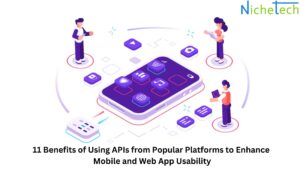The dating app industry is booming, with millions of users worldwide seeking connections through their smartphones. If you’re considering diving into this lucrative market, proper planning is essential to ensure your app stands out in a crowded space. Here’s a step-by-step guide to help you plan your dating app development effectively.
1. Define Your Niche and Target Audience
Not all dating apps are created equal, and users are drawn to platforms that cater to their specific needs and preferences. To carve out a unique space:
Identify a niche: Focus on a specific group, such as professionals, pet lovers, or hobby enthusiasts.
Research your audience: Understand their demographics, behaviors, and pain points to tailor your app to their needs.
2. Conduct Market Research
Study the competition and gather insights into what works and what doesn’t in existing dating apps. Key aspects to analyze include:
Features and functionalities.
Monetization strategies.
User feedback and reviews.
This research will help you pinpoint opportunities to innovate and avoid common pitfalls.
3. Prioritize User Experience (UX)
A seamless user experience is crucial for a dating app’s success. Plan for:
Intuitive navigation: Users should easily browse profiles, send messages, and manage their preferences.
Onboarding: Offer a simple yet engaging sign-up process.
Safety and privacy: Incorporate robust verification systems, secure data handling, and user reporting mechanisms.
4. Define Core Features
While the specifics will depend on your target audience, here are some must-have features:
Profile creation: Allow users to showcase their interests and preferences.
Matching algorithms: Use filters, preferences, and behavioral data to suggest compatible matches.
Chat functionality: Include real-time messaging and options for voice or video calls.
Push notifications: Keep users engaged by notifying them of matches, messages, and app updates.
Geolocation: Enable location-based matching for convenience.
5. Choose a Tech Stack
The technology stack for your dating app depends on your desired features and scalability. Key considerations include:
Platform: Native (iOS, Android) or cross-platform development.
Backend: Opt for reliable servers and databases to handle user data securely.
APIs: Leverage APIs for functionalities like geolocation, payment processing, and social media integration.
6. Plan Your Monetization Strategy
Decide how your app will generate revenue. Popular models include:
Freemium: Offer a free version with basic features and charge for premium features.
Subscriptions: Provide tiered plans for exclusive benefits.
In-app purchases: Allow users to buy boosts, gifts, or premium visibility.
Advertisements: Partner with brands to display relevant ads (but avoid overwhelming users).
7. Build a Prototype
Before diving into full-scale development, create a prototype to:
Visualize the app’s design and flow.
Test core functionalities.
Gather feedback from potential users and stakeholders.
Prototyping helps you refine your app before significant resources are invested.
8. Assemble a Development Team
Whether you build in-house or hire a development agency, ensure your team includes:
Project managers.
UI/UX designers.
Frontend and backend developers.
Quality assurance testers.
Marketing professionals.
Collaboration and clear communication are vital for staying on track and meeting deadlines.
9. Focus on Marketing and Launch Strategy
A strong marketing plan is essential to attract users from day one. Consider:
Pre-launch buzz: Use social media, influencers, and teaser campaigns.
App Store Optimization (ASO): Optimize your app’s listing for visibility.
User acquisition: Offer promotions or referral programs to encourage sign-ups.
10. Plan for Continuous Improvement
A successful dating app is never truly “finished.” Post-launch, focus on:
User feedback: Regularly gather and implement user suggestions.
Feature updates: Stay ahead of trends with new features and enhancements.
Performance monitoring: Use analytics to track usage patterns and identify areas for improvement.







